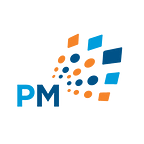What Are The Best Practices In Policy Management?
Considering the the complex nature of healthcare systems, it is understandable that for many facilities knowing how to handle policy and procedure management system, may be a tough starting point. However, having a robust policy management software solution may help simplify the processes in involved and create an environment that is better managed and more organized. With that said, having a set of best practices helps healthcare organizations be better prepared for surveys, mitigate risks and helps you provide the best care possible to patients.
Policy and Procedure Management 101
Policy management is a process of creating, communicating and maintaining the policies and procedure manuals of a healthcare facility. Understandably, a healthcare facility may have numerous policies and procedures documents on a range of topics. Hence, having an effective policy management solution can help better manage these documents and support the organization’s activities through communication, which ultimately helps establish a culture of compliance within it. This help protect the organization from litigation, and ultimately improves the service of care provided to its patients.
The best practices to ensure that your organization’s policy and procedure management is handled effectively and efficiently.
FIND A POLICY ADMINISTRATOR
Being a key component of a healthcare organization’s policy management system, the policy administrator is the person who will be the resident expert when it comes to handling and managing the policy management system. A policy administrator can be sourced either internally or externally, with the position being either full time or part time, based on the needs of the organization. If the department decides to choose a candidate internally, it is helpful to pick one within the administration, quality, or compliance departments. The typical responsibilities of this position include maintaining and distributing policies, procedures and forms, providing training regarding the usage of the system, and compiling policy data.
CREATE A POLICY COMMITTEE
Creating a policy committee is one of the most effective best practices as it helps your organization remain in compliance with regulatory boards by keeping your policy initiative on track, and by ensuring your policies are up to date. Such committees allow for centralization of thought and open communication about your policy and procedure management process. The committe should comprise of stakeholders from several departments such as IT, quality, nursing, administration, as well as education. It is advised to have regular meetings ranging from once a week to quarterly intervals, and should be tactical in nature, lasting no more than 50 minutes, with a clear agenda outlined.
STANDARDIZE YOUR POLICY FORMAT
Organizations go through various changes throughout the course of their lives. These changes might occur through mergers, regulatory changes, etc. Subsequently, these changes may lead to inconsistent policy formats which can result in various problems in terms of communication and distribution of the documents. Therefore, it is highly recommended to adapt a consistent look for your policies, which would include a logo, legal disclaimer, and the inclusion of all key policy sections.
CREATE A POLICY ON POLICIES
Setting a standard on policies is vital to having an organized and efficient policy documents library. Such policy would establish a clear process of drafting, reviewing, and approving all organizational policies. Regulations and standards of the organizational norms and expectations should be kept in when when writing the policy on policy documents.
DELEGATE RESPONSIBILITIES AND CONTROL ACCESS
An effective policy management system allows its users to establish a workflow to provide you with the ability to delegate responsibilities to specific individuals such writing, editing, reviewing, and approving policies. This standardizes the way a policy is revised. It is important to grant administrators full control over granting users different levels of access, as it helps better the security and privacy of the system.
TRACK ALL POLICY CHANGES — WHEN, WHY AND BY WHOM
There may be times when questions or disputes arise regarding compliance. During such instances, a clear trail of policy changes is important as it helps create accountability. Thus, an efficient policy management system should have the ability to track and record all changes, as well as who made them and why. In addition, is it helpful for the system to notify a user regarding upcomings reviews, as well as archiving previous versions.
An efficient approach to policy and procedure management is standardized, has designated leaders and provides easy access to all updated policies and procedures. A comprehensive policy and procedure management system should be a pillar of an organization’s compliance and patient safety activities. In today’s ever-changing regulatory environment it is important to have a policy and procedure management system that can adjust and adapt to the needs of your organization. These best practices will help your organization form a solid foundation to reach your policy and procedure management goals.
At PolicyMedical, we develop and build solutions that help manage and organize policies and contracts seamlessly and effectively so you don’t have to waste any unnecessary time and effort, that would otherwise be directed to your primary tasks, i.e. taking care of your patients. With that said, despite our best efforts we may not always be the best fit for every healthcare facility and there may be other vendors that are. Regardless, we are more than happy to help you come to a conclusion, even if it means we aren’t a fit. Please, do not hesitate to contact us, should you need any assistance. Alternatively, you may book a demo to see our solutions in action.
